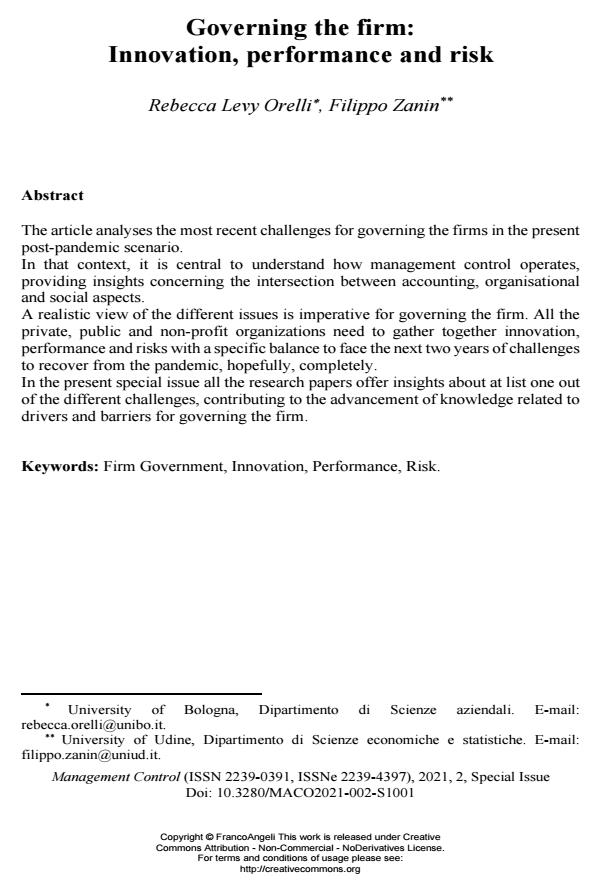Governing the firm: Innovation, performance and risk
Titolo Rivista MANAGEMENT CONTROL
Autori/Curatori Rebecca Levy Orelli, Filippo Zanin
Anno di pubblicazione 2021 Fascicolo 2021/suppl. 2
Lingua Inglese Numero pagine 10 P. 5-14 Dimensione file 173 KB
DOI 10.3280/MACO2021-002-S1001
Il DOI è il codice a barre della proprietà intellettuale: per saperne di più
clicca qui

FrancoAngeli è membro della Publishers International Linking Association, Inc (PILA)associazione indipendente e non profit per facilitare (attraverso i servizi tecnologici implementati da CrossRef.org) l’accesso degli studiosi ai contenuti digitali nelle pubblicazioni professionali e scientifiche
The article analyses the most recent challenges for governing the firms in the present post-pandemic scenario. In that context, it is central to understand how management control operates, providing insights concerning the intersection between accounting, organisational and social aspects. A realistic view of the different issues is imperative for governing the firm. All the private, public and non-profit organizations need to gather together innovation, performance and risks with a specific balance to face the next two years of challenges to recover from the pandemic, hopefully, completely. In the present special issue all the research papers offer insights about at list one out of the different challenges, contributing to the advancement of knowledge related to drivers and barriers for governing the firm.
Parole chiave:Firm Government, Innovation, Performance, Risk.
- Il contributo dei sistemi di RM e PM alla sostenibilità integrata: il caso B&C Speakers Lorenzo Leto, Diletta Vito, in MANAGEMENT CONTROL 3/2024 pp.113
DOI: 10.3280/MACO2023-003006
Rebecca Levy Orelli, Filippo Zanin, Governing the firm: Innovation, performance and risk in "MANAGEMENT CONTROL" suppl. 2/2021, pp 5-14, DOI: 10.3280/MACO2021-002-S1001